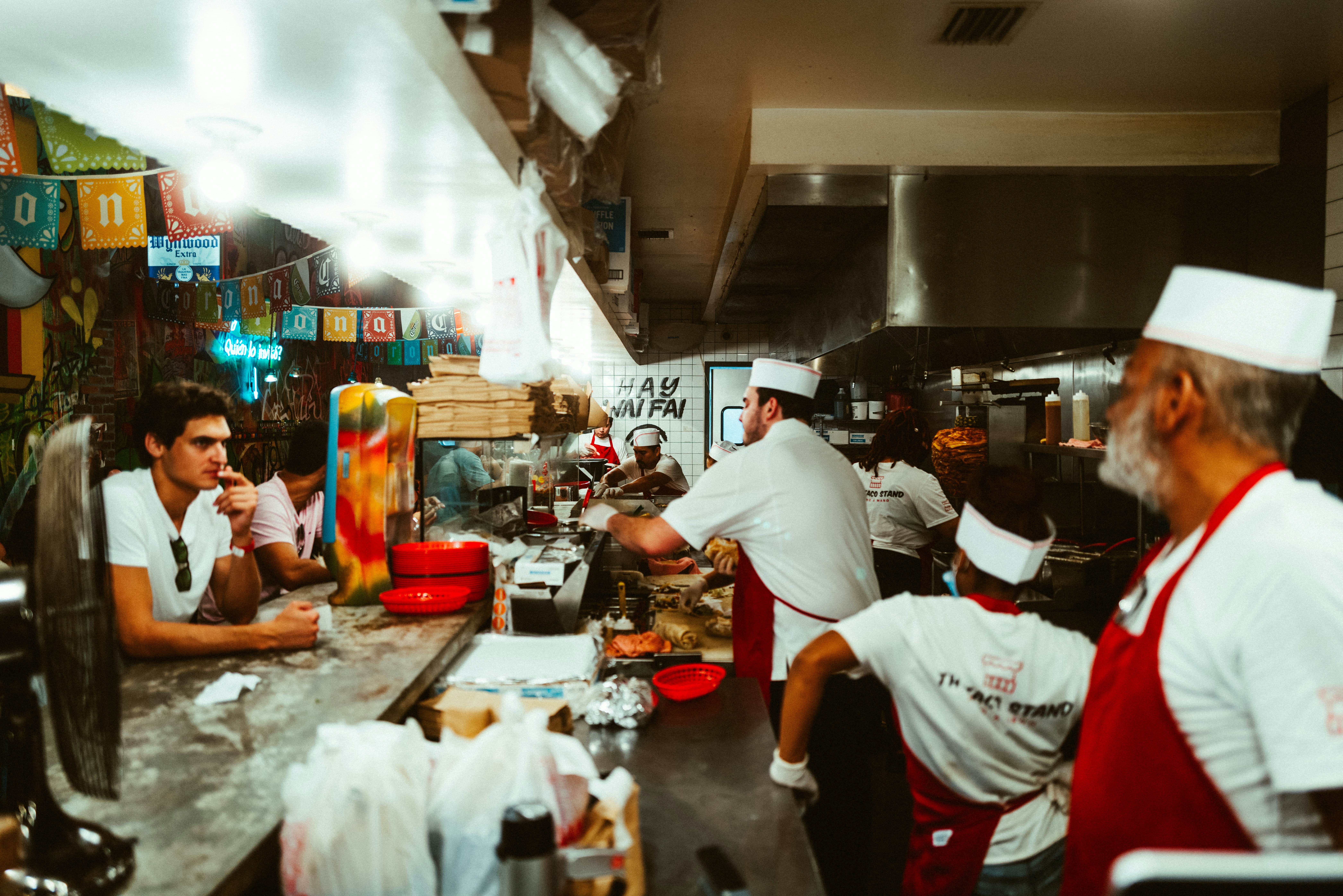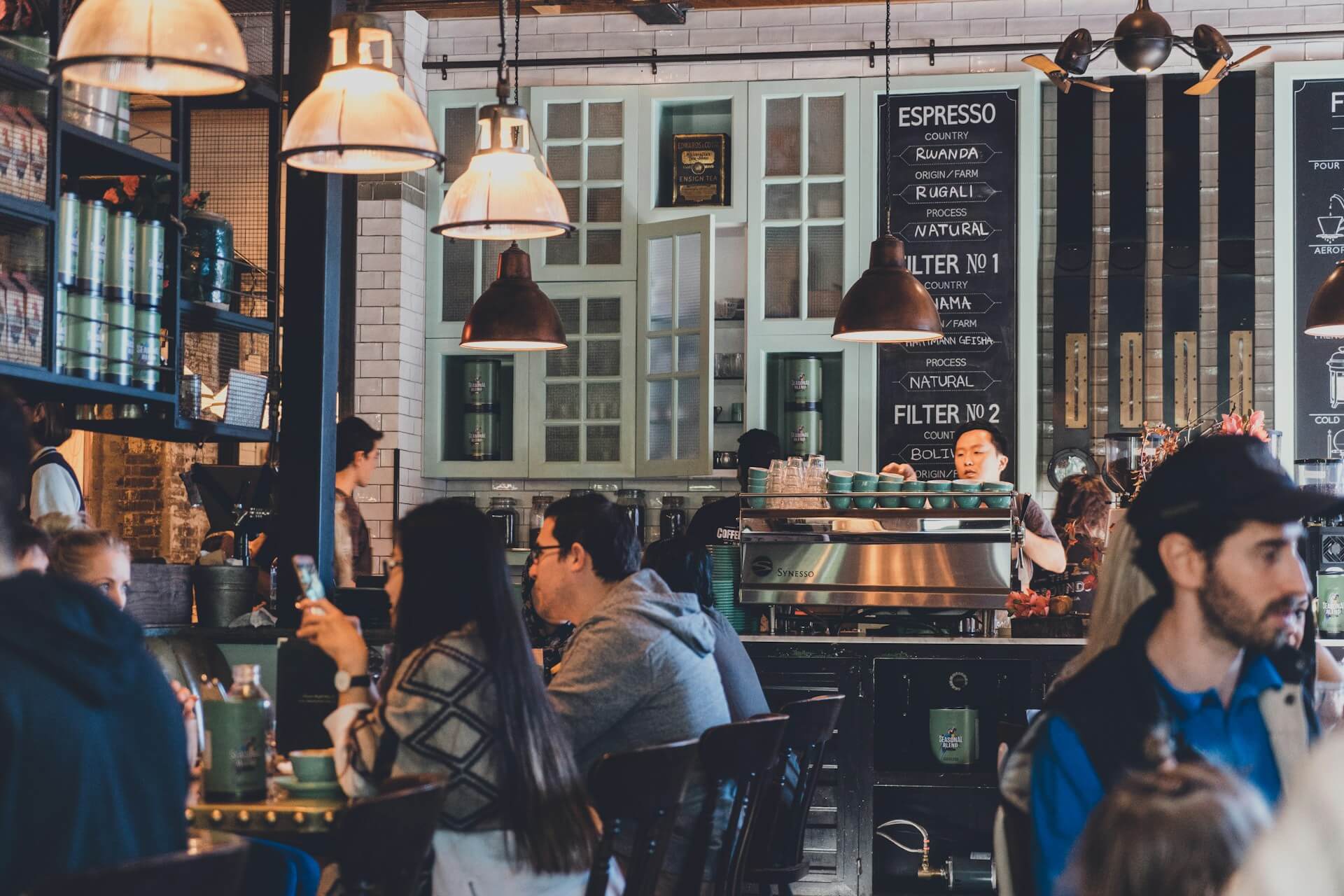The kitchen brigade system plays a key role in professional kitchens, ensuring everything runs smoothly and efficiently with clarity on roles and responsibilities. It’s a chef ranking system designed to manage the pressures of a busy kitchen while ensuring that customer service doesn’t suffer. These systems are the backbone of operational efficiency in hospitality businesses like full-service restaurants.
In this guide we’ll cover:
- What is a kitchen brigade system?
- History of the kitchen brigade system
- Benefits of having a kitchen brigade in your restaurant
- Brigade system kitchen jobs
- Adapting the kitchen brigade system for modern restaurants
- How Dojo can help
- FAQs
Inside the kitchen: What is a kitchen brigade system?
The kitchen brigade system is a structured kitchen hierarchy used to organise staff to streamline operations and clearly define responsibilities. This system is important in managing the complexity and fast pace of professional kitchens.
The history of the kitchen brigade system
The kitchen brigade system or chef brigade system was developed by Auguste Escoffier in the late 19th and early 20th centuries. Escoffier's approach brought a military-style organisation to the kitchen, creating a more efficient and professional culinary environment. This system has now become a standard in kitchens worldwide.
Teamwork triumphs: The benefits of having a kitchen brigade in your restaurant
Implementing Escoffier’s brigade system in a full-service restaurant, and even abridged versions in cafes and bars, as well as quick-service restaurants, can bring a wide number of benefits, boosting both efficiency and the overall dining experience
1. Improved organisation and efficiency
With clearly defined roles and responsibilities, the chef brigade system ensures that everyone knows what they need to do. This reduces confusion and overlap – for smoother operations and faster service.
2. Enhanced communication
The kitchen hierarchy improves communication within the kitchen. Information flows more effectively from the executive chef down to the line cooks and assistants, ensuring that everyone is on the same page, at all times.
3. Higher quality food
When each team member focuses on their specific tasks using Escoffier’s brigade system, the quality of food improves. Specialised roles allow staff to hone their skills in particular areas, leading to more consistent and higher-quality dishes.
4. Better team coordination
The brigade system encourages teamwork and coordination. Each role supports the others, creating a cohesive unit that works together to deliver excellent service.
5. Professional development
Working within a structured chef ranking system allows staff to improve their skills and advance their professional development.
6. Stress reduction
A well-organised kitchen reduces the stress of high-pressure environments. When everyone knows their role and responsibilities, along with an equally divided workload, the kitchen runs more smoothly.
7. Consistency in service
The brigade system ensures consistency in food preparation and service. With established protocols and roles, restaurants can maintain a high standard of service.
Roles defined: Brigade system kitchen jobs
Hierarchy in a kitchen brigade
The brigade system is organised into a clear hierarchy, with each position having distinct duties. Here’s a breakdown of the chef levels:
Chef Executif (Executive Chef) and Chef de Cuisine (Kitchen Leader)
At the top of the kitchen hierarchy of the Auguste Escoffier brigade system are the Chef Executif and the Chef de Cuisine. The Chef Executif oversees the entire kitchen operation, including menu planning and staff management.
The Chef de Cuisine, often the same person in smaller kitchens, leads the kitchen team and ensures the highest standards of food quality and safety.
Sous Chef de Cuisine (Second-in-Command)
The Sous Chef de Cuisine is the second-in-command, assisting the Chef de Cuisine in daily operations. They supervise the kitchen staff, manage inventory, and ensure smooth kitchen operations. When necessary, they may step in for the Chef de Cuisine.
Chef de Partie (Line Cook)
The Chef de Partie, or line cook, manages a specific section of the kitchen, according to Auguste Escoffier’s kitchen brigade. Examples of the chef positions include:
- Saucier: Prepares sauces and sautéed dishes.
- Garde Manger: Handles cold dishes, salads, and appetisers.
- Patissier: Specialises in desserts and pastries.
- Boucher: Prepares meats and poultry.
Each Chef de Partie ensures their station runs efficiently and maintains high-quality output.
Commis Chef (Junior Chef)
The Commis Chef is an entry-level position, usually occupied by someone who has recently completed their culinary training. They work under the Chef de Partie, helping with food preparation and basic cooking tasks, gaining hands-on experience in various kitchen stations.
Plongeur (Dishwasher)
The Plongeur, or dishwasher, is responsible for cleaning dishes, utensils, and kitchen equipment. Following the brigade cooking system, they also assist with basic food prep and maintaining cleanliness.
Aboyeur (Expediter)
The Aboyeur, or expediter, coordinates between the kitchen and the dining room. They ensure that orders are prepared correctly and on time, maintaining the flow of service to deliver meals promptly to customers.
Bridging eras: Adapting the kitchen brigade system for modern restaurants
Roles and needs
In today's fast-paced and dynamic restaurant environment, the traditional brigade system and chef positions can be adapted to meet contemporary demands. Modern kitchens, especially within growing enterprises, often require more flexibility and multi-skilled staff due to the fast pace and growing pains when expanding to new locations. Here are some adjustments that can be made to the brigade system by Escoffier:
- Flexible roles: Chefs may need to handle multiple stations or roles, especially in small kitchen brigades. Cross-training staff ensures that operations run smoothly even when someone is absent.
- Technology integration: Leveraging technology for inventory management, order tracking, and communication can boost efficiency. These can streamline operations and reduce the need for manual processes.
- Health and safety focus: Modern kitchens place a higher emphasis on health and safety standards. Roles may include specific responsibilities for maintaining hygiene and implementing safety protocols.
Leveraging modern payment solutions alongside the cooking brigade system
Seamless front-of-house processes complement efficient kitchen operations – all enabled by payment solutions like Dojo.
- Implementing virtual queues and bookings can streamline customer flow, reduce wait times, and improve customer satisfaction. This system allows customers to book tables in advance and wait virtually, easing the pressure on the kitchen during peak times.
- The use of payment links offers quick and easy transactions, reducing the time spent on payment processing. This feature is particularly useful for takeaway orders and delivery services, ensuring a smooth and efficient payment experience.
Strategies to increase table turnover rate can maximise revenue and improve customer satisfaction. Efficient payment processing, combined with fast service, ensures that tables are cleared and prepared quickly for the next guests.
Dojo: The perfect Sous Chef for your payments
By adopting the kitchen brigade system and integrating our powerful payments suite, restaurants can achieve a whole lot more, from the behind-the-scenes kitchen to the front-of-house. Choose efficiency, improve the dining experience, and stay competitive with the right tech.
Start accepting card payments with Dojo Pocket to turn more tables and reduce walkouts with card machines that deliver fast, secure, and seamless transactions.
Check out our blog for more tips and tricks on how to grow your business.



